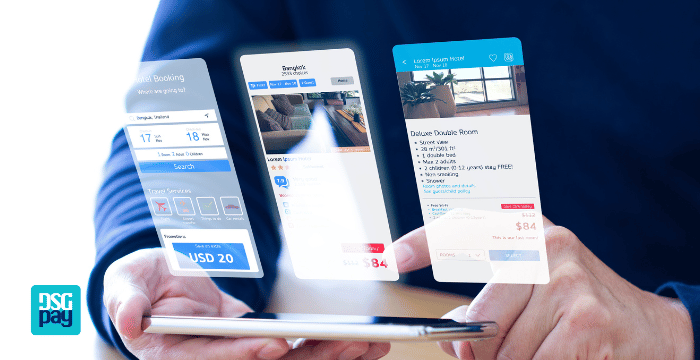Real-time transactions have become a game-changer in the payment industry, providing faster and more convenient payment solutions for businesses and consumers alike. Compared to traditional methods, these new systems bring significant benefits, including increased speed and convenience, improved security and fraud prevention, a better customer experience, and reduced transaction costs and fees.
Today we’re exploring the advantages of real-time transactions over traditional payment methods, highlighting how this technology is transforming the payment industry, such as e-commerce, retail, and travel, and how businesses can benefit from implementing this technology.
As the payment industry continues to evolve, real-time transactions are expected to play a critical role in driving innovation and unlocking new opportunities for businesses. By staying ahead of the curve and adopting real-time transaction technology, businesses can improve their bottom line, enhance customer satisfaction, and remain competitive in their respective industries.
The Impact of Real-Time Transactions on Business Efficiency
1. Increased Speed and Convenience
Real-time transactions are changing the landscape of payment processing by providing faster and more convenient payment solutions for businesses and consumers alike. In traditional payment methods, transactions could take several days or even weeks to complete. This was due to the slow and cumbersome processes involved, such as manual processing and clearance by multiple parties. However, with these systems, payments can be processed instantly without any delays. This means that businesses can receive payments faster, and consumers can make purchases and receive goods or services immediately.
2. Improved Security and Fraud Prevention
Real-time transactions have also improved security and fraud prevention compared to traditional payment methods. With this technology, funds are transferred instantly, and any fraudulent activities can be detected and prevented in real time.

Additionally, these systems often incorporate advanced fraud prevention and risk management tools, such as multi-factor authentication and machine learning algorithms, to ensure the safety of transactions. This increased security and fraud prevention provide peace of mind for both businesses and customers, making them a superior choice over traditional payment methods.
3. Enhanced Customer Experience
Real-time transactions not only provide faster and more secure payment processing but also improve customer experience. Customers no longer have to wait for a few days for payments to clear, allowing for a smoother and faster transaction process. Additionally, these systems also enable customers to track their payments in real-time, providing greater transparency and control over their finances. Furthermore, they can help reduce errors and discrepancies that may occur with traditional payment methods, providing a more reliable and efficient payment processing experience for customers. The convenience and ease of use lead to a more seamless customer experience, ultimately resulting in greater customer satisfaction and loyalty.
4. Reduced Transaction Costs and Fees
Traditional payment methods often involve multiple third-party entities, which can lead to higher transaction fees and longer settlement times. On the other hand, real-time transactions can enable direct payment transfers, bypassing intermediaries and reducing associated fees. This is especially advantageous for businesses that process high volumes of transactions, as they can save high costs on fees and transaction processing. Additionally, these systems allow for immediate confirmation of payment, reducing the risk of chargebacks and disputes that can further add to transaction costs. Overall, the adoption of real-time transactions can help businesses improve their bottom line by reducing transaction costs and fees, enabling them to reinvest those savings into their business.
Transforming Industries with Real-Time Transactions
Real-time transactions can significantly benefit various sectors, including e-commerce, retail, and travel. By adopting this technology, businesses can enhance payment processes and elevate customer experiences. Here’s how different industries can leverage real-time transactions:
E-commerce
• Offers immediate checkout experiences without extra verification steps.
• Reduces the likelihood of cart abandonment, leading to increased sales.
Retail
• Provides faster checkout times, minimizing customer wait times.
• Improves the overall shopping experience, especially for high-volume transactions.
Travel

• Facilitates instant booking confirmations and payment processing.
• Reduces the risk of double bookings or missed reservations, enhancing customer satisfaction.
Overall, the implementation of real-time transactions enables businesses across various industries to provide faster, more efficient payment processing, improving the overall customer experience. By embracing this technology, companies can maintain a competitive edge in their markets.
Conclusion
In today’s fast-paced world, businesses and consumers alike demand faster and more efficient payment processing solutions. Real-time transactions have become the superior choice over traditional payment methods, offering benefits such as increased speed and convenience, improved security and fraud prevention, enhanced customer experience, and reduced transaction costs and fees. By adopting real-time transaction technology, businesses can improve their bottom line, enhance customer satisfaction, and stay ahead of the curve in their respective industries. As the payment industry continues to evolve, real-time transactions will play a critical role in driving innovation and unlocking new opportunities for businesses.



